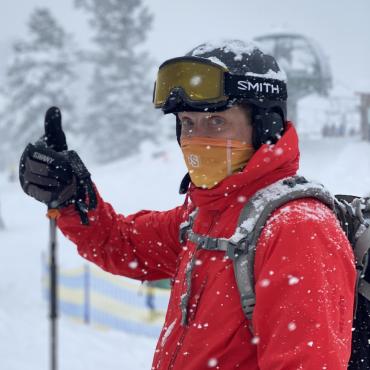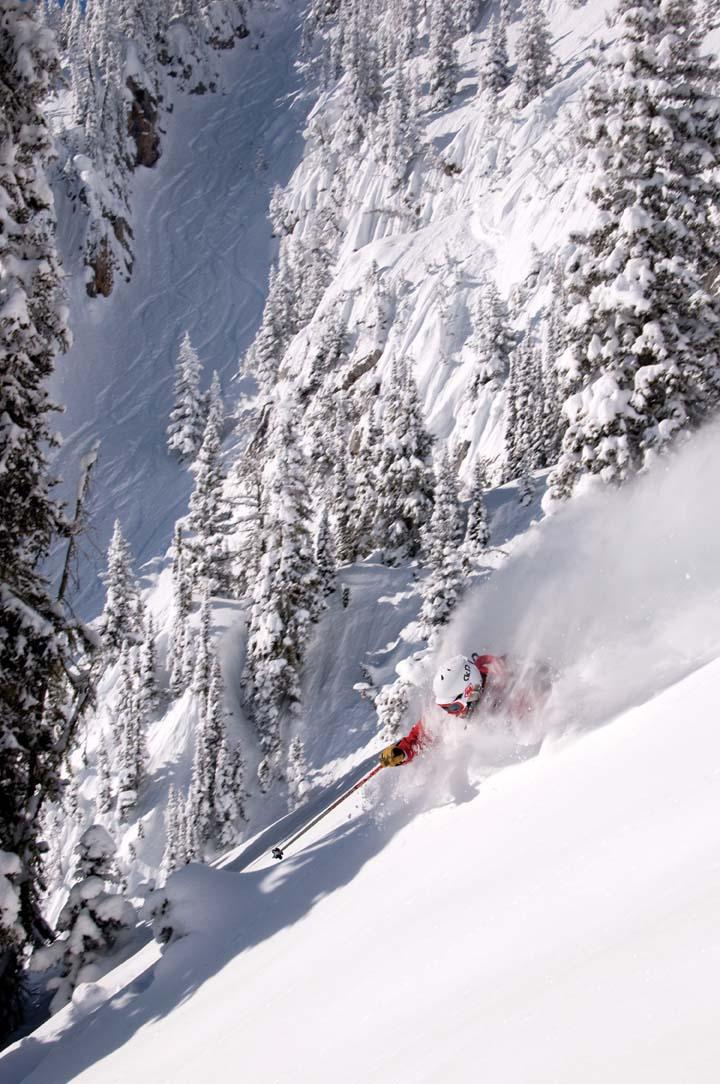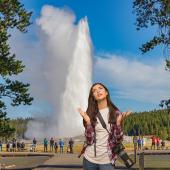Action Shots
Getting good action shots can be tricky—if you don’t do it right, your high-speed freeriding friend will look like he’s creeping down the bunny slope. Here are a few things to think about when you’re trying to capture those perfect images of your favorite winter pastimes.
Equipment
Unfortunately, the shutter delay on most point-and-shoot cameras makes capturing action almost impossible. An SLR camera (camera with a removable lens) will take better action shots, period. The faster the frames-per-second (fps) the better; look for a camera that shoots 4 fps or faster. Most SLRs do. The more frames you can shoot, the better the chances that you freeze time right at that perfect instant.
The next important piece of equipment is the lens. For skiing, I like an 18-200 zoom lens with vibration reduction, but any decent auto-focus lens will work. The more you spend, the better the lens; but unless you’re trying to become a pro, expensive lenses aren’t necessary. Weight and cost are also factors in that decision and a padded carrying case is essential.
The last critical items are memory cards and batteries. You can never have too much memory; cards are cheap compared to film and processing. Keep your batteries warm and charged, and bring extras.
There are tons of technical tricks and techniques to practice when using an SLR. The best part is that you can control all the settings manually, or put it on auto-pilot if you’re not very experienced. Shutter speed is probably the most critical setting for action. A faster shutter speed will freeze the action, while a slower speed might create interesting visual effects, especially if you pan with your subject as they whizz past you. There is really no right or wrong way, so you just have to experiment.
Location
The next thing to decide is where to go. In Montana there are a ton of options and scenic backdrops, and exploring new places can be part of the fun. Think about how to get interesting angles that show action or movement. You can go for tight shots that show in-your-face action or wide shots that impart a sense of place. Sometimes the best action shots are from a distance and really capture the surroundings as well as the action. Try to find spots where you don't see houses or power lines behind the subject. It's always a little more romantic if a skier appears to be far from civilization, rather than right next to the lodge. When you find places that are really great, it often takes several trips back to the spot before you capture the perfect image. So much of what makes any photo great is light and luck.
Always think about where the sun is. You may want direct light or you may want backlight; it really depends on the situation and what look you're going for. When shooting skiing, always look for the best light and the best angle to capture the action. The most interesting images combine all of these things: dramatic light, an interesting backdrop, and stellar action.
Models
Perhaps the hardest part about getting really good action shots is finding partners or “models” that understand what you’re looking for. I know hundreds of great skiers, but only a few that have the patience and willingness to do what it takes to get really good photos—especially on a powder day. Photographers are often chasing the light as much as we're looking for fresh tracks. You have to be quick, both to set up shots and keep up with your models. Your subjects should also wear bright clothes. A nice red jacket tends to produce better results than an old black one that blends into the background.
Most important, you should always be having fun. After all, it's just a picture.
Co-founder of the Vast Gallery, Travis Andersen has been a Bridger skier and photographer since 1990.












